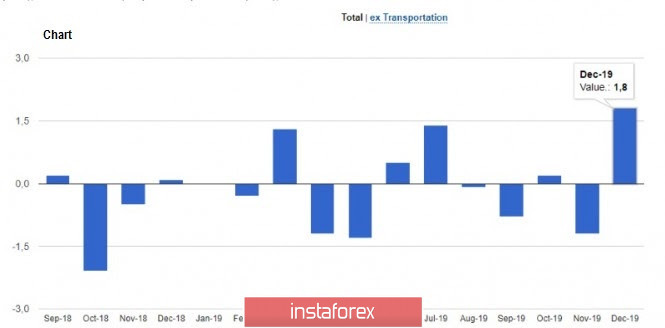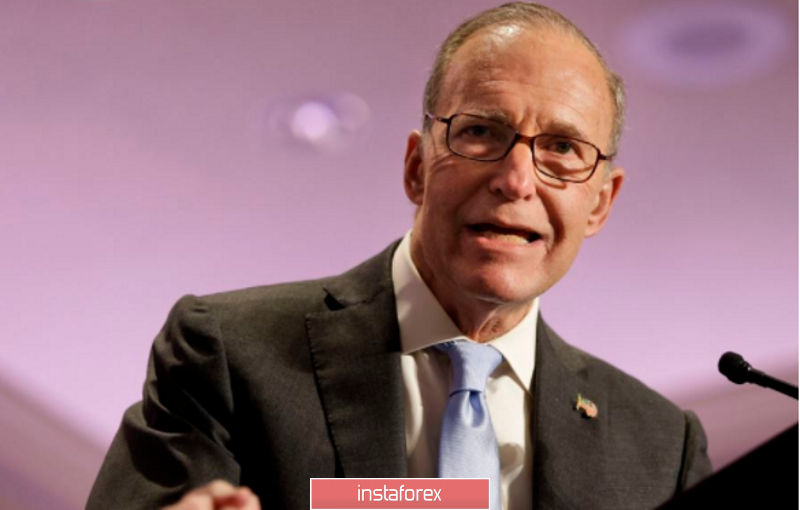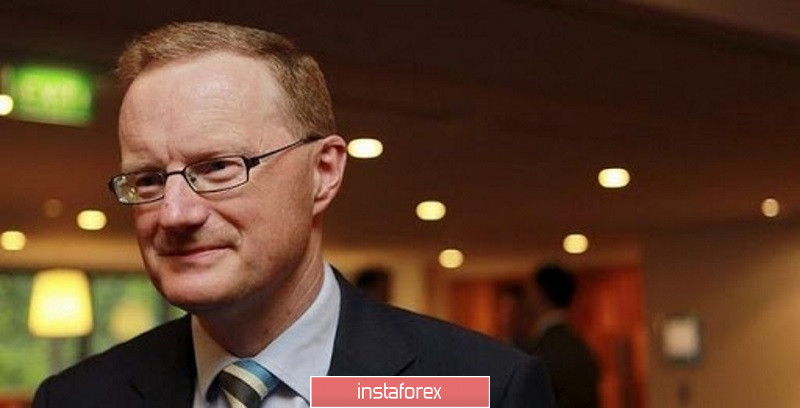The US dollar continued to strengthen its positions against euro and pound on Tuesday. The two currencies were experiencing problems amidst weak inflation in the Euro zone and expectations of a negative scenario in the UK-EU trade agreement.

In addition, the US dollar was supported by the data on orders for manufactured goods in the US, which increased significantly in December 2019. However, we should not think that the situation in the manufacturing sector is quickly normalizing, as most of the growth is directly related to the jump in orders for defense products. According to a report from the U.S. Department of Commerce, production orders in December of this year increased by 1.8% compared to the previous month, and amounted to $ 499 billion. Meanwhile, economists had expected orders to grow by 1.4%.
On the plus side, good growth was seen in durable goods orders. It increased by 2.4%, whereas orders for short-term goods showed a less active growth of 1.1%. This was enough for the dollar to resume its growth against the euro and the pound in the North American session.

Although the indicator of business conditions in New York city rose, it was still below the 50-point mark, because of the reduced expectations for future conditions. According to the Institute for Supply Management (ISM ), the index of current business conditions in January 2020 was 45.8 points, as compared to 39.1 points in December. Let me remind you that an index value above 50 indicates an increase in activity. The index was expected to fall to 57.3 points. At the same time, the employment index also declined to 56.1 points.
The US dollar was not particularly affected by the reports from The Retail Economist and Goldman Sachs, which indicated an increase in the sales index of US retail chains. According to the data, the index increased by 0.7% for the week of January 26 to February 1, and increased by 3.1% for the same period in 2019.
As for the report from Redbook, due to the post-holiday season, retail sales in the United States increased by only 0.2% for the first 4 weeks of January. Meanwhile, sales increased by 5.4% over the same period in 2019, and increased by 5.7% on year-on-year for the week of January 26 to February 1.
Yesterday, there were a lot of reports in the media related to the coronavirus, which weakened the demand for safe haven assets. The Chinese government said that despite the rapid spread of the virus, the death rate from it is much lower than that of SARS or Ebola. Moreso, according to the country's Foreign Ministry, the percentage of deaths in China caused by the coronavirus is 2.1%.

During his speech, Larry Kudlow, Director of the National Economic Council at the White House, said that the spread of the coronavirus may affect the US economy, since US and China has already signed the first phase of their trade agreement. He is concerned that China may fail in its part of increasing exports and purchases of agricultural products, as the spread of the coronavirus has already affected the Chinese economy, and many businesses are shutting down as part of efforts to prevent the spread of the virus. However, despite that, Kudlow still believes that in the long run, consequences will be minimal.
As for the technical picture of the EUR/USD pair, the pressure on the euro remains. The lack of activity in the part of major players in the area of 1.1035 casts doubt on the probability of the pair's growth from this level in the near future. Most likely, buyers will show themselves only after updating the lows of 1.1020, where the lower border of the upwards channel will be built, or even lower, in the support area of 1.0990. Another interesting scenario is the buyers returning the risky assets to the resistance of 1.1050, which will lead to an upward correction in the area of yesterday's high at 1.1065 to the level of 1.1095.

AUD/USD
The Australian dollar continues to recover its positions against the US dollar. This is the result of the decreasing tensions related to the coronavirus, as well as today's speech by the Governor of the Reserve Bank of Australia.
In his speech, Philip Lowe focused on interest rates, saying that the RBA Board is looking at both the benefits and costs of further rate cuts. However, the continuing rise of the unemployment rate as well as the weak inflation are strong arguments for lowering it in the future. Among the advantages of lowering the rates, Lowe also noted a likely reduction in household debt and a growth in the domestic consumption growth. Unfortunately, the downside is that further rate cuts will put pressure on the already weakening Australian dollar. The RBA also sees some risks at very low rates, which could lead to another sharp rise in prices and demand for housing. Whether the Central Bank is going to ease monetary policy, he did not say anything. He only noted that if the economy weakens, the reaction may follow from both the RBA and the government. Meanwhile, attention will be given to the GDP in the 1st quarter due to the spread of the coronavirus.





















